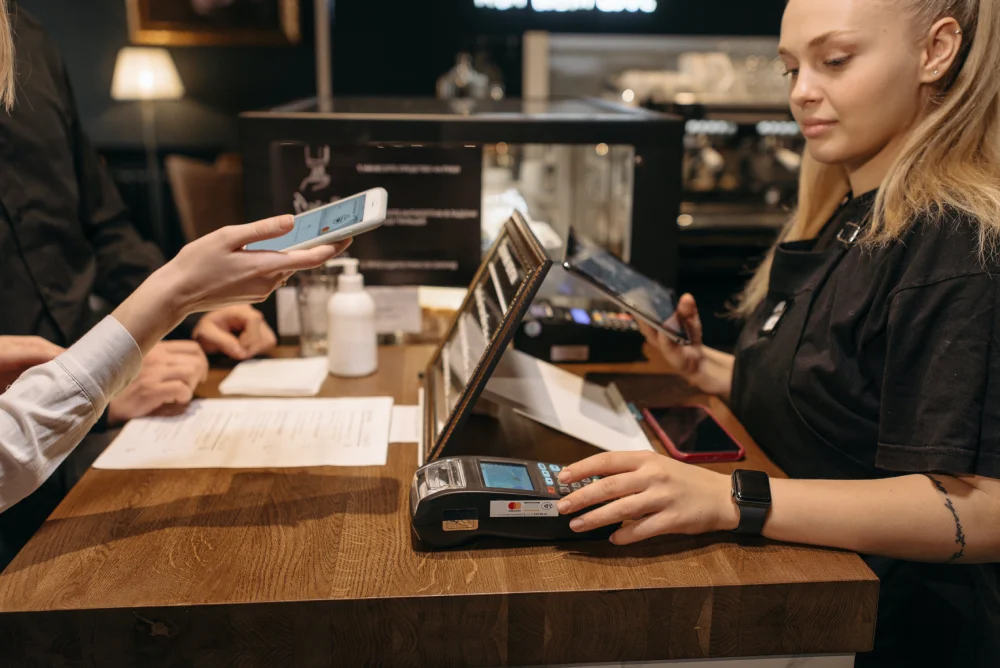Ready to get started?
Get paid faster and save up to 50% on fees with Pay by Bank.
You’ve probably heard of them—Monzo, Starling, Revolut. These slick, app-based banks are popping up everywhere, and they’re doing things very differently from the high street banks we’re all used to. But what exactly are neobanks, and why are so many businesses and consumers switching over?
Let’s take a look at how neobanks are changing the game, what challenges they’re still facing, and what it all means for businesses in the UK.
What are neobanks?
Neobanks are fully digital banks—no branches, no queues, no paper forms. Everything happens online, usually through a mobile app. They offer many of the same services as traditional banks (like current accounts, payments, and even savings tools), but without the overheads of physical locations.
Because of that, neobanks can often offer lower fees, faster onboarding, and a more user-friendly experience—something that appeals to time-strapped customers and businesses alike.
A fast-growing movement
In the UK, neobanks have made huge strides over the past few years. From freelancers and small business owners to Gen Z consumers, more and more people are turning to digital banks for speed, convenience, and better tech.
In fact, Revolut alone saw 13 million app downloads in 2023, making up nearly 40% of all new bank app downloads that year. The momentum is real—and it’s only picking up.
What does this mean for traditional banks?
The rise of neobanks has definitely shaken things up. High street banks, once untouchable, have been forced to rethink how they do business. Many have responded by improving their apps, streamlining customer service, and offering better digital tools.
The result? More competition, more innovation, and—at least in theory—better service for customers. That’s a win all round.
Challenges for neobanks
Even with all their growth, neobanks aren’t without their growing pains. Here are some of the main hurdles they’re navigating:
- Keeping up with authorisations: The financial industry is vigilant and for good reason. Neobanks have to meet the same standards as traditional banks when it comes to anti-money laundering (AML), fraud detection, and knowing your customer (KYC). That’s no small feat, especially for newer players without decades of infrastructure behind them.
- Turning a profit: Many neobanks have grown quickly by offering free or low-cost services, but turning a profit is another story. Without the same revenue streams as traditional banks (like mortgage lending or investment services), some are still figuring out how to be financially sustainable in the long run.
- Winning customer trust: Let’s face it—people still feel reassured by a physical bank branch. For some, especially older customers or those handling large sums, trusting an app-only bank takes time. Neobanks need to prove they’re safe, secure, and here for the long haul.
Regulatory hurdles in the UK
The UK is actually a relatively friendly environment for fintech innovation, but that doesn’t mean it’s easy. Regulatory bodies like the FCA (Financial Conduct Authority) are keeping a close eye on neobanks to ensure they don’t become easy targets for fraud or financial crime. Recent statements from the FCA have made it clear: compliance and transparency are non-negotiable. For neobanks to grow with confidence, they’ll need to continue investing in strong internal systems and risk controls.
Neobanks vs. traditional banks: A quick comparison
Here’s how neobanks stack up against the banks most of us grew up with—from the perspective of the everyday user:
| Feature | Neobanks | Traditional banks |
|---|---|---|
| Accessibility | App-based, 24/7, no branches | Online + physical branches |
| Account setup | Fast, paperless, often within minutes | Slower, may require documents or branch visit |
| Fees | Lower or no monthly fees | Often higher fees and charges |
| Product range | Focused (e.g. current accounts, payments, savings) | Full-service (including mortgages, loans, investments) |
| Customer support | Chat and email support, no in-person help | Phone, online, and in-branch support |
| Trust & security | Still building reputation; strong digital security | Long-established trust; robust but sometimes slower systems |
So what’s next for neobanks?
Despite their challenges, neobanks have plenty of room to grow. Here are some of the biggest opportunities they’re tapping into:
- Better tech, faster services: Expect even more automation, smarter insights, and speedier payments.
- Personalised experiences: Thanks to data and AI, neobanks can tailor offers, budgets, and features based on real user behaviour.
- Fintech partnerships: By teaming up with other innovators, neobanks can expand their services and deliver more value to users.
Final Thoughts
Neobanks aren’t just a trend—they’re part of a wider shift in how we think about money, business, and convenience. And while they may not fully replace traditional banks just yet, they’re clearly carving out a permanent place in the UK’s financial ecosystem.
For UK business owners, this means more choice, better tools, and the chance to work with banking partners that actually move at the speed of your business.



